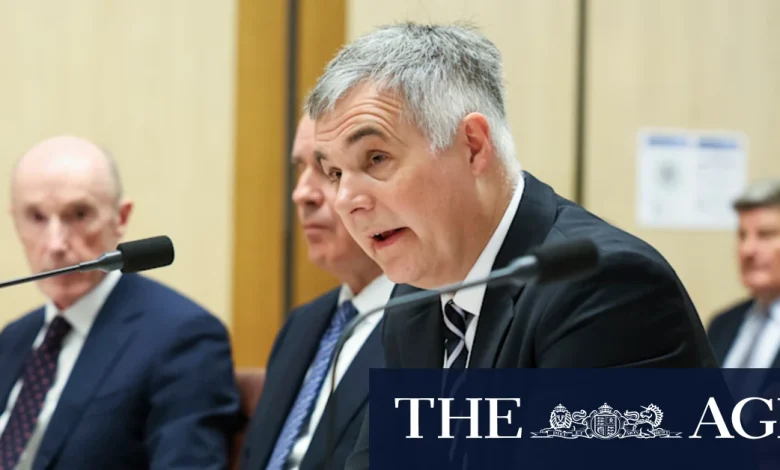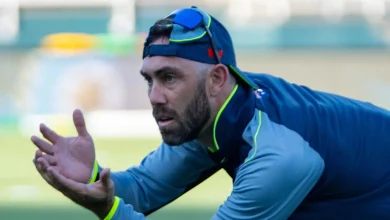Savaged Optus boss faces claims of misleading Senate

“You didn’t give any further update… even when you knew on the Thursday night that it was worse than you had previously informed the government.”
Pressed repeatedly on why he didn’t immediately provide updated information about the true number affected or deaths, Rue insisted he “wanted to provide accurate information” but admitted that his call to notify the regulator came nearly 18 hours after learning of the first fatality.
Rue also conceded there were delayed welfare checks on at-risk customers as engineers scrambled to manually identify failed emergency calls.
In his opening statement, Rue announced that Optus would add 300 people to its Australian call centres focused on Triple Zero customers and would on-shore its network operations from offshore contractors, in response to the catastrophic network failure.
He said Optus accepted full responsibility for the failures and said he “regretted reforms were not embedded earlier to prevent them”.
Loading
“We are all deeply sorry, the tragic deaths of people during this outage will stay with us as individuals and as a company, as we investigate and build on our response while progressing a sweeping transformation of Optus,” he said.
“We will add around 300 people to our Australian call centres focused on Triple Zero and vulnerable customers, including our specialist care teams helping customers in rural areas, elderly customers or those with serious medical conditions.
“In May this year, the board approved a management proposal to take back in-house network activities currently performed by Nokia, both onshore and offshore. At the time, the aim was to transition this work progressively to May 2027, but I have now asked the networks team to accelerate the move.
“In addition to the on-shoring activities in call centres and networks, we are also recruiting 150 people to be part of a new Process Centre of Excellence in Australia, to accelerate the transformation and overall procedures across the business.”
Loading
Rue pushed back on calls for his resignation that have come from across the political spectrum.
“I firmly believe that another change of leader at this time is not what Optus needs or what our customers need. The disruption and uncertainty could actually set back the transformation underway and create further risks,” he said.
Optus chair John Arthur backed his chief executive, but promised future consequences for staff responsible for the Triple Zero outage.
“That’s his job. Now, he’s partway through this job and I’m expecting him to finish it,” Arthur said. “Because I never in my life want to be in the position I’m in today where I have to answer these sorts of questions about a company I’m associated with.”
He said once an internal Optus review, a review by the regulator, and the Senate inquiry were finalised, there would be consequences for both junior and senior staff.
“I can assure you that there will be [accountabilities] when the dust settles. And what I mean by that is that when we have all of the facts… the board will deal with accountabilities.”
The Senate inquiry, which was established by the Greens and the Coalition, will hold more hearings before handing down its report.
Henderson on Monday called on Communications Minister Anika Wells to appear at the next hearing.
“I do want to say to the families and loved ones and friends of those who died, if you do reach out to us, we are so horrified about what has happened,” she said. “If you want to reach out to us, either confidentially or otherwise, we are here to hear your story.”
Optus’ crisis stemmed from a botched firewall upgrade at Regency Park exchange in South Australia, where technicians failed to redirect traffic before locking down a critical “session border gateway”, according to the telco’s submission to the inquiry.
Optus’ Paul O’Sullivan, former chairman, John Arthur, chairman, and Stephen Rue, CEO, at the Triple Zero service outage hearing at Parliament House in Canberra on Monday.Credit: Alex Ellinghausen
The submission reveals Nokia contractors used an outdated procedure document and incorrectly rated the change as “zero risk”, bypassing crucial engineering reviews.
It states that Nokia personnel selected an “outdated Method of Procedure (MOP) document” for the change. This outdated document “did not include making changes… to ‘offload’ traffic from the Session Border Gateway” before applying the lock.
The work was also brought forward 24 hours without proper authorisation.
Loading
Automated alarms for general call failures were generated within minutes of the outage starting. Those alerts, at 12.20am on September 18, were dismissed as routine maintenance activity, while five customer calls reporting Triple Zero failures between 10.13am and 2.57pm went unescalated – a “serious process issue” that Optus acknowledged was unacceptable.
The outage wasn’t identified until 1.17pm when South Australian Ambulance Service called Optus directly. Services were restored by 2.34pm, but the damage was done.
Efforts to conduct welfare checks on affected customers were then delayed because the technical fault meant that standard Call Detail Records (CDRs) “showed no unsuccessful calls”.
Engineers had to devise new methods to identify affected customers, with the first 100 identified by 7.50pm – more than five hours after services were restored. A further 524 customers were identified the next morning, followed by seven more days later.
Welfare checks didn’t commence until 8.34pm on September 18, with Optus learning of the first fatality at 8.43pm. By Friday afternoon, three deaths had been reported, rising to four by Saturday.
The company has appointed former Sydney Water chief executive Dr Kerry Schott to lead an independent review, and engaged consulting firm Kearney to oversee network management improvements.
Get news and reviews on technology, gadgets and gaming in our Technology newsletter every Friday. Sign up here.





